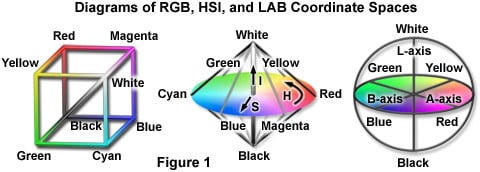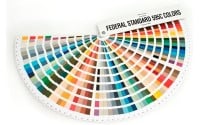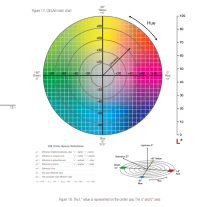Can House Paint Be Made by Color Code

One of the most frequent questions we get is 'what is the paint code?'
This is an interesting question which means different things to different people. Is the paint code the color number for a standard such as RAL or Pantone? Or a formula? Or a descriptive measure such as Lab, CMYK or RGB?
The most common reason someone asks for a 'paint code' is because their paint supplier needs a color number they can use to make paint. For example, most powder coat companies stock RAL paint colors, so if you want a specific color in powder coat, the least expensive thing to do would be to specify the color you need as a RAL color number.
So what are all these possible 'paint codes' and what do the words mean?
At the end of the day, a color is lightwaves reflecting off a surface. Different colors absorb different wavelengths of light across the visual spectrum. We see the combination of wavelengths not absorbed as the color. Scientists over time have developed various ways of measuring and describing colors, and different methods are used by different industries for different purposes.
Most of the time the 'code' is a color number within a specific color collection. This could be a RAL color number, a Federal Standard Paint Color number, or a color in a fan deck provided by a paint company. These color numbers typically are just arbitrary numbers assigned to the color and cannot be used to describe the color in any sort of universal manner.

Paint standards are collections of colors created to provide a common reference to communicate color. For example, The Federal Standard 595C is a set of colors used by the US Government to specify colors from state department walls to color coding for artillery shells. RAL is a color standard created by a German company that has become the de facto standard for powder coatings. Pantone Paint Colors is a set of colors that has become the standard of marketing applications such as branding.
Paint manufacturers create their own sets of colors. These are provided in color swatches in color books often showing various combinations of people can use in their homes. The dealers for these manufacturers are provided with a computer system, paint bases, colorants, and formulas for making all these colors.
Color standard companies usually only provide swatches of colors and no instructions or ingredients to make them. Pantone was created as an ink standard for printers, and the set of colors contains mostly bright and rich hues typically used for signs, products and logos, but not for walls in people's homes. This is why regular paint stores are usually not able to reproduce Pantone colors, because they don't have the ingredients necessary to reproduce these bright colors.
Color spaces are methods for describing and measuring any color. These include Lab, CMYK, RGB and Munsell. These color spaces use various methods to describe colors and most often include at least 3 dimensions. Lab is the method most often used for paint - it is a system to measure color within a three dimensional color space where the 'L' represents an axis with white at one end and black at the other, 'a' represents an axis with red at one end and green at the other, and 'b' represent an axis with yellow at one end and blue at the other. A and b represent the hue and chromacity (the color's brightness) and L represents the lightness. Colors can be communicated using Lab values, and in combination with the light source, Lab can provide enough information to reproduce the color.

RGB is another color space where a color is communicated in terms of the amount of red green and blue it has, mimicking the red green and blue cones in our eyes. This is most commonly used for computer display applications and doesn't translate well into paint. RGB is considered a device dependent color space, which means the RGB value alone doesn't communicate enough information about the actual color. The resulting color is affected by the equipment being used to generate and display it.
CMYK, another device-dependent color space, is the color space most commonly used for printing. The colors cyan, magenta, yellow, and black combine with the white background of paper for creating colors. This color space also doesn't translate well into paint since the background cannot be used.

Lastly, some people are thinking about a color formula when asking for the 'paint code'. A paint formula is the recipe to make a color. It is the list of ingredients and proportions used to make the color. Formulas are not universal because they depend on the specific ingredients, and every paint company has different ingredients. Formulas are typically not transferable. Most often a color would just need to be re-matched in the new color system to create a new formula.
So when someone asks you for the paint code, ask for clarification for what they need.
Can House Paint Be Made by Color Code
Source: https://www.myperfectcolor.com/What-is-the-Paint-Code/34182.htm